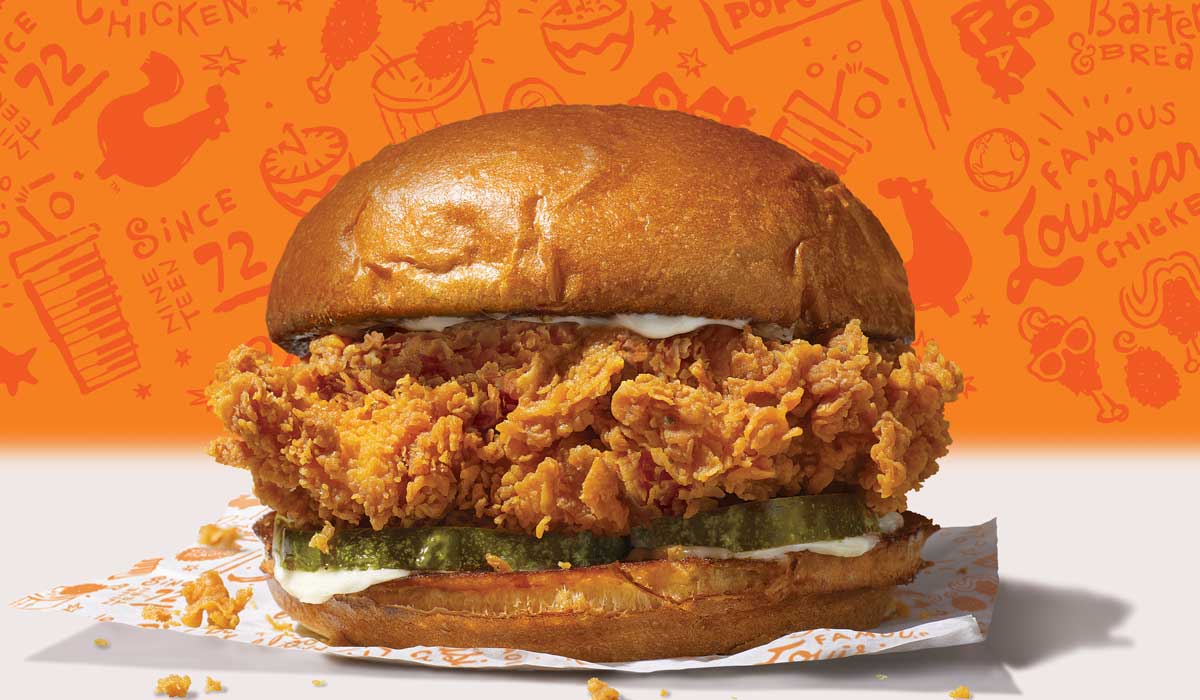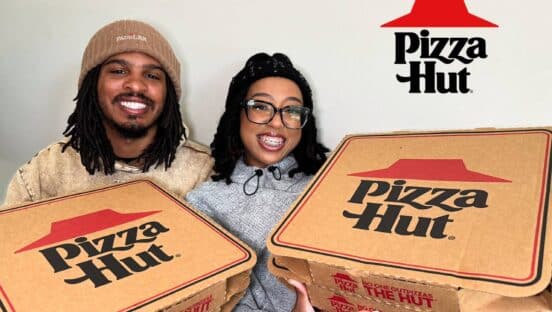Everything changed for the restaurant industry after the COVID-19 outbreak, but one thing did not change for Popeyes Louisiana Kitchen: its eye-popping sales results.
The chicken chain reported a 30 percent comparable sales bump in the U.S. in the first quarter, according to parent Restaurant Brands International’s (RBI) earnings report. Popeyes’ global system-wide sales increased over 32 percent to $1.3 billion, split between 26 percent in global comparable sales growth and nearly 7 percent unit growth.
Meanwhile, fellow RBI brands Burger King and Tim Hortons saw global comparable sales decreases of 3.7 percent and 10.3 percent, respectively. Burger King’s U.S. comparable sales were down 6.5 percent.
RBI CEO Jose Cil said on a call Friday that all three of its brands were starting to rebound from a late-March sales nadir, thanks largely to their ability to pivot to new business models and technologies.
“We are fortunate to have drive thru, takeout, mobile order and payment, curbside, and delivery options in many of our restaurants that have allowed us to be a safe, trusted, and convenient choice for millions of guests who have had to change their routines or stay at home in these extraordinary times,” he said. “The groundwork our technology teams have put in place over the last two years allowed us to rapidly accelerate valuable improvements to our loyalty, CRM, and mobile app platforms that ultimately improve guest engagement and differentiate our iconic brands.”
Starting to rebound
Cil noted that, thanks to the renewed emphasis on off-premises, each brand enjoyed low-double-digit-percentage improvements in sales through April in their home markets. With the broader shift in consumer lifestyles, RBI has seen stronger business on weekdays, a “disproportionate decrease” in breakfast and snacking versus lunch and dinner, and generally a bigger check size as there are more group dining occasions.
More than 95 percent of Burger King, Popeyes, and Tim Hortons restaurants in the U.S. remain open, Cil said.
“We know that the full reopening of all of our restaurants and service modes will take some time yet, but we’re encouraged by early signs of improvement in sales trends across many of our major markets,” he said. “With all the decisions we’ve taken, and with a strong working relationship we have with our restaurant owners, we believe we’re well-positioned to come out of this crisis even stronger as a system.”
Popeyes’ Q1 success is staggering considering the broader state of the restaurant industry, which, while improving, is struggling to regain pre-coronavirus sales levels, especially without dining rooms in most parts of the country. It’s a testament to the power of Popeyes’ Chicken Sandwich, which debuted in August and led to comparable sales jumps of 10.2 percent and 37.9 percent, respectively, in Q3 and Q4 of 2019.
Cil noted on the earnings call that Popeyes’ performance before and after the COVID-19 outbreak varied greatly. In January, February, and the first two weeks of March, comparable sales were up in the 30s thanks to the Chicken Sandwich as well as other menu staples. After mid-March, he said, sales were essentially flat year-over-year—still impressive when compared with the rest of the industry.
“Popeyes’ success last year was unlike anything any of us have seen in our careers, but its resilience in the face of COVID-19 with dining rooms closed across the country has been equally remarkable,” Cil said. He added that Popeyes has seen an increase in average order size and ticket in its off-premises channels, particularly for dinner because of its family meal bundles.
“Comparable delivery sales are up in the triple digits year-over-year, and we continue to see delivery as a huge opportunity to reach new guests and in large, the trade area of our stores, as the brand builds on the momentum it has sustained from last year,” he said.
Cil said that Burger King’s comparable sales were up in the low single digits before the coronavirus, driven in part by the Impossible Whopper and various value offerings. However, in the last two weeks of Q1, just after the outbreak of COVID-19 and the closure of dining rooms, Burger King’s comparable sales were down in the low-30s.
“Since then, our intense focus and modified approach to drive thru has allowed us to improve sales in the channel each week, and our drive-thru sales for Burger King U.S. are now up over 15 percent year-over-year and have been positive since the second week of April,” Cil said. In the last few weeks of April, Cil added, Burger King’s comparable sales were down in the mid-teens.
Working with the system
Cil pointed out the steps RBI has taken since the pandemic started to ensure the safety of its team members and guests, and to emphasize the new methods of business for customers so they can still conveniently order from the brands. He said RBI was among the first restaurant companies in North America to close its dining rooms before governments mandated, and to install social distancing measures in the back and front of house. The company mandated masks, gloves, and contact-less procedures, and began conducting temperature checks for team members.
Further, RBI increased the hourly wages for crew members at corporate locations by $3 in the month of April to thank them for their service. Cil and members of RBI’s Board of Directors, meanwhile, have all redirected half of their compensation to fund charitable foundations providing relief for team members throughout this season.
Cil said the company has also been adapting its marketing strategy to redirect attention to its off-premises business opportunities—some of which, he said, RBI hasn’t highlighted for a long time.
“In particular, the availability and utility of our drive thrus,” he said. “In this environment, a drive-thru window is a great option for so many people who want to limit physical contact.
And for guests that can’t access our drive thrus, we’re rolling out new curbside pickup options on our mobile apps in North America. We’ve also adjusted our recent marketing to highlight the benefits of home delivery, and how accessible our products are, both through our own app and through third-party delivery partners.”
RBI COO Joshua Kobza said on the earnings call that each brand’s digital capabilities will continue to be critical for the company’s success moving forward.
“As of the third week of April, for our home markets, digital sales represented about 9 percent of total sales at Burger King, 15 percent of total sales at Popeyes, and more than 30 percent of total sales at Tim Hortons,” he said. “We believe that our future growth prospects will be increasingly tied into our digital capabilities, and we will continue to build leading teams and capabilities in technology, so that we can bring our guest’s digital experiences that contribute toward our dream of building the most-loved restaurant brands in the world.”
To further help operators survive the current season, RBI has also instituted measures to assist store owners. It’s communicating at least weekly with the brand advisory boards, and working with them on important decisions. It moved to a 100 percent variable rent at around 3,700 locations where it has property control, allowing those store expenses to adapt with the sale impact. April’s rent was deferred for up to 45 days to give store owners “flexibility in managing their cash flow,” Cil said, adding that the company had “looked ahead and identified a number of significant cash payments that would be due to owners and pull those forward, representing more than $70 million of advanced liquidity.”
U.S. Burger King owners had $15,000 per restaurant made immediately available as a cash advance on rebates, Cil said, and RBI also temporarily suspended capital investment commitments for owners on things like renovations and new development. He added that the company is “engaged with our restaurant owners to identify sources of immediate liquidity, including by working with suppliers to secure extensions to payment terms and by working with lenders to access new lines of credit.”






